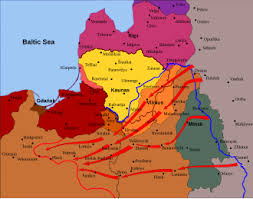The Relationship Between Lithuania and Poland: Past and Present

Introduction
The relationship between Lithuania and Poland is a topic of significant historical and geopolitical importance in Eastern Europe. With both nations sharing a complex history of unity and rivalry, understanding the dynamics between them helps to grasp contemporary issues affecting the region. As NATO members and part of the European Union, both countries are pivotal in the discussions surrounding security and economic cooperation in Europe.
Historical Context
Throughout history, Lithuania and Poland have experienced periods of collaboration and tension. The most notable instance of their alliance came with the establishment of the Polish-Lithuanian Commonwealth in 1569, which lasted until the late 18th century. During this time, the two nations flourished together, sharing political power, culture, and interests.
However, the partitions of Poland in the late 18th century led to a significant decline in both nations’ sovereignty. After the dissolution of the Commonwealth, Lithuania was absorbed into the Russian Empire, while Poland was divided among Prussia, Austria, and Russia. These events have shaped the modern identities of both nations.
Recent Developments
In recent years, Lithuania and Poland have sought to strengthen their ties amidst growing security threats from neighboring countries, especially Russia. The 2022 escalation of the Russia-Ukraine conflict has heightened concerns about regional security, bringing the two nations closer together in military cooperation and diplomatic initiatives. Both countries are working on joint projects to enhance defense capabilities and infrastructure, such as the Rail Baltica project, which aims to link the Baltic states with Poland and the rest of Europe.
Moreover, cultural exchanges continue to foster a sense of connection between the two populations. Festivals, educational programs, and joint initiatives are designed to celebrate shared heritage while addressing contemporary issues through a unified voice.
Conclusion
As Lithuania and Poland navigate the modern geopolitical landscape, their historic relationship plays a crucial role in shaping their future interactions. The challenges posed by regional security concerns and cooperative initiatives highlight the importance of mutual support and cultural understanding between the two nations. Looking ahead, it is likely that Lithuania and Poland will continue to work closely, reinforcing their partnerships in defense, economic growth, and cultural exchange, ultimately contributing to a stable and prosperous Eastern Europe.









